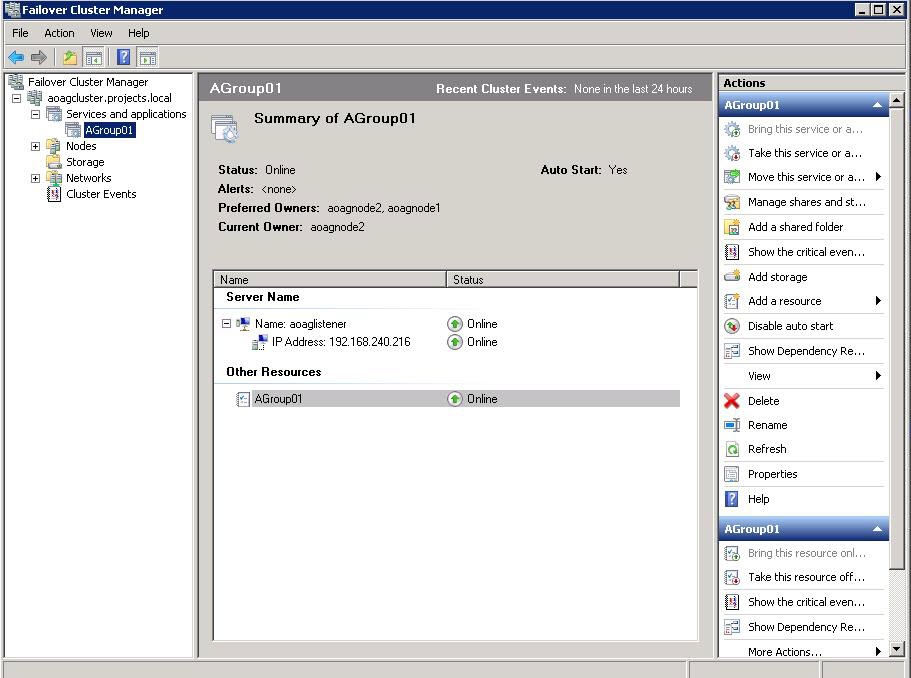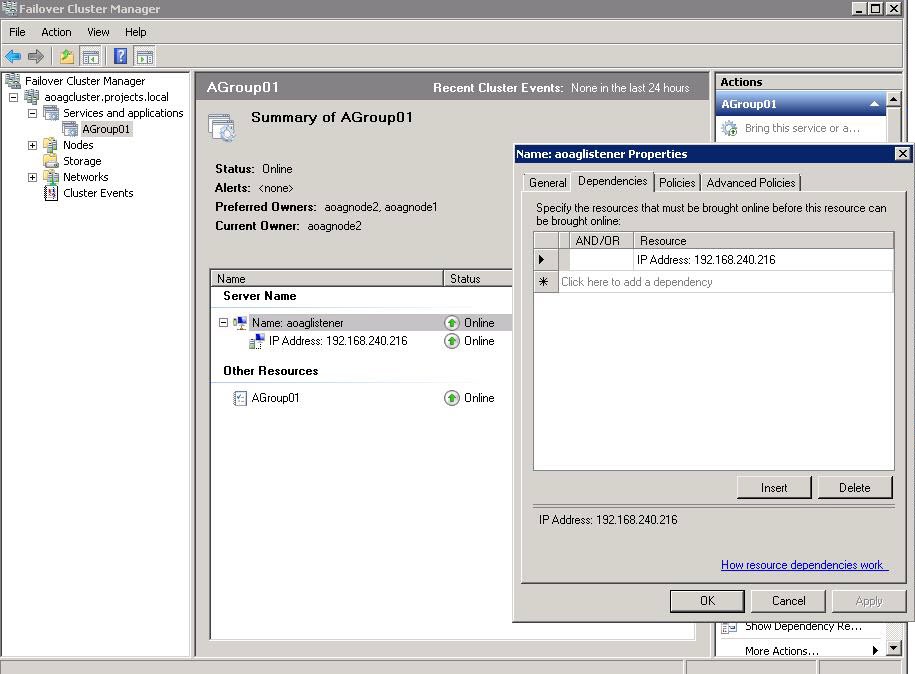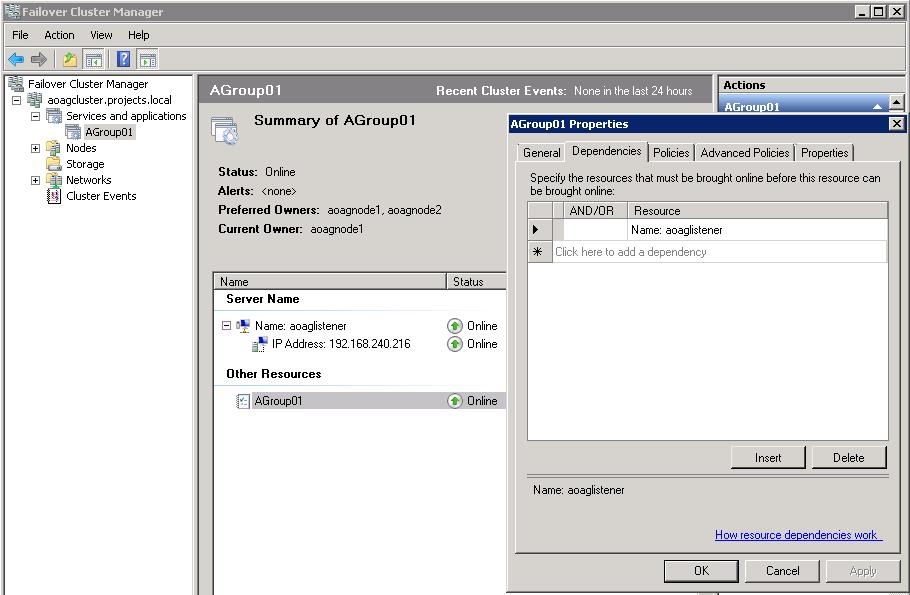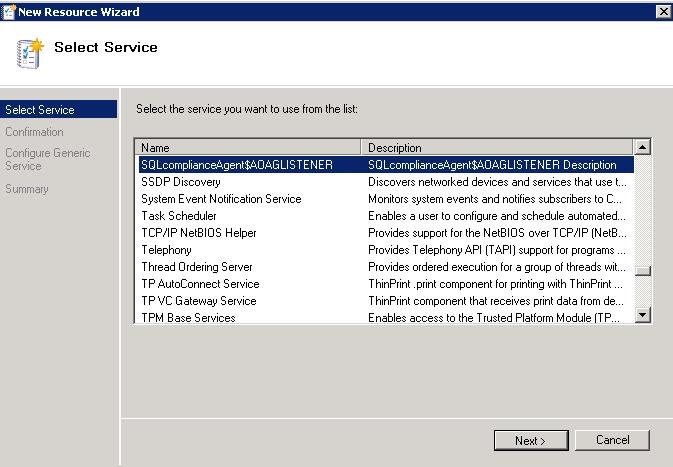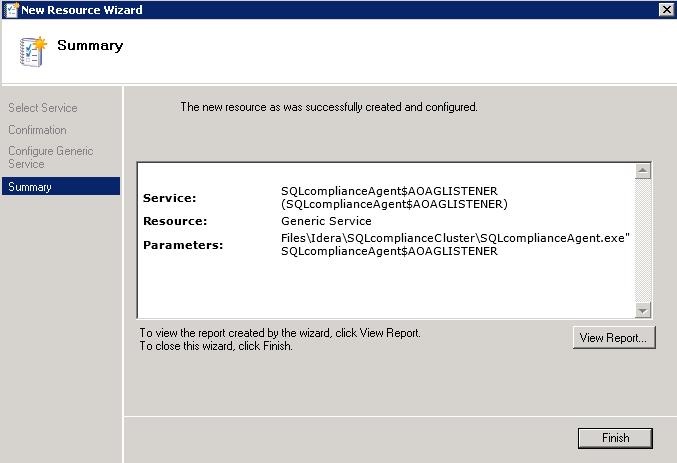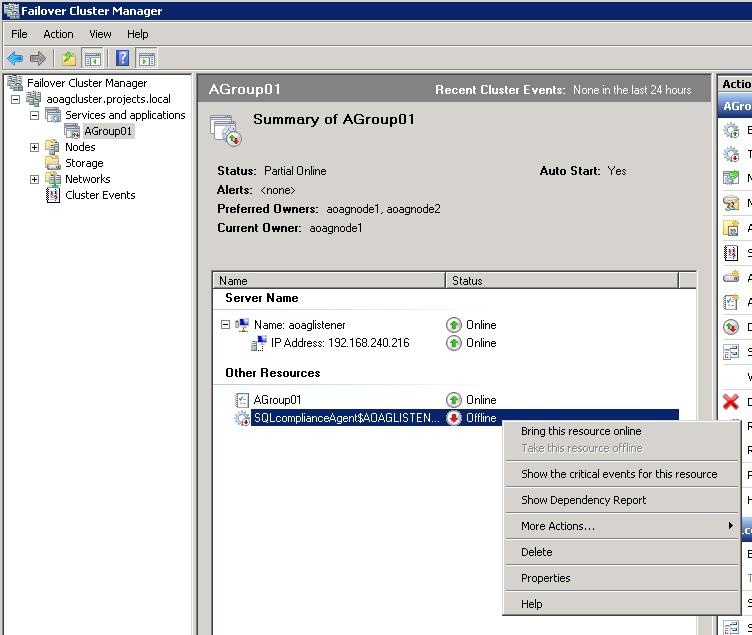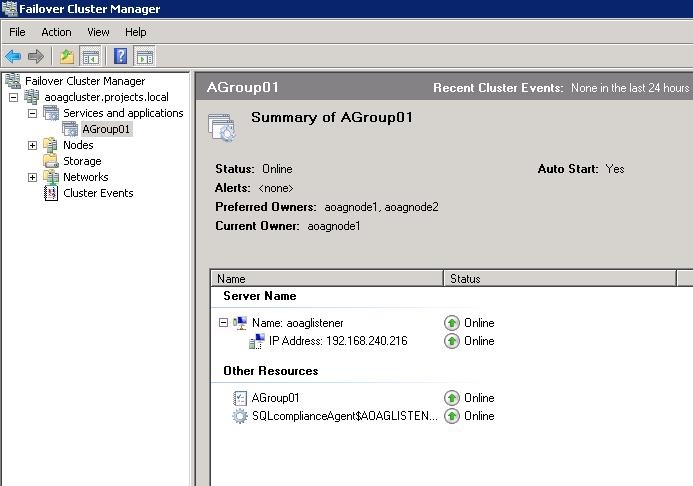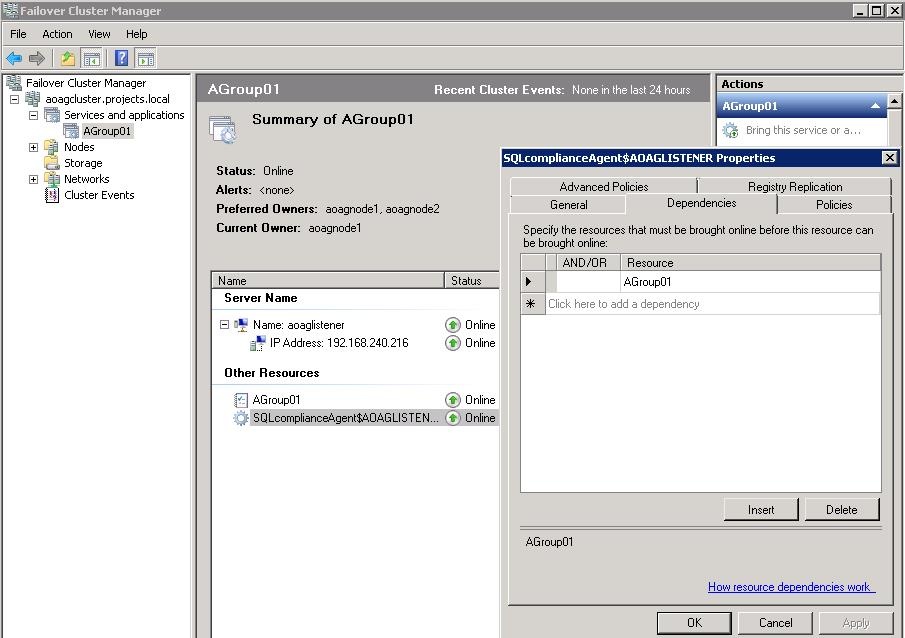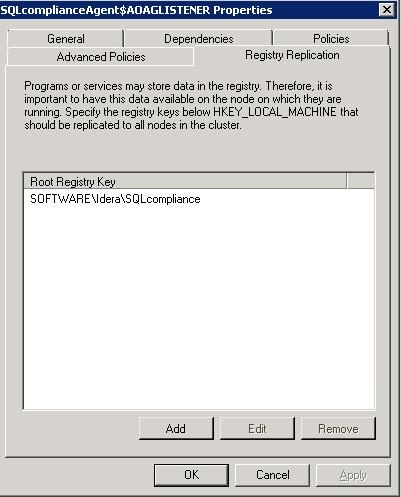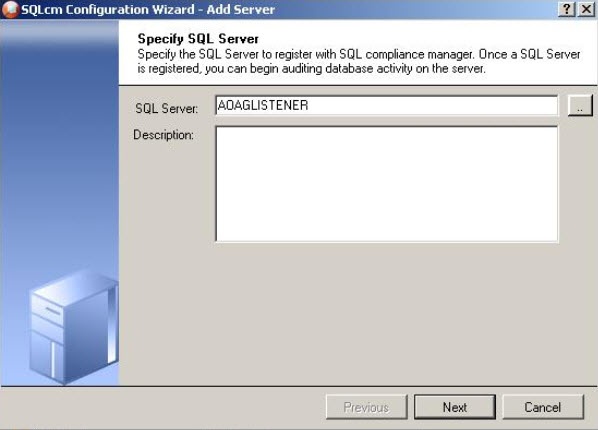Page History
...
- After installing the cluster agent service on all Listener nodes, open Server Manager.
- In the Server Manager tree, click Server Manager > Features > Failover Cluster Manager. The system displays Failover Cluster Manager.
- Select the cluster service group created for the cluster agent service. In the following example,
AGroup001is the cluster service group. - In the Server Name area, select the resource name of the cluster service group, and then click Properties in the Actions panel. In the following example,
aoaglisteneris the resource name. Failover Cluster Manager displays the Properties window. Click the Dependencies tab. - Verify that the Resource field displays the listener IP address.
- In the Other Resources area of the Failover Cluster Manager window, select the resource within the cluster service group, and then select Properties. In the following example,
AGroup01is the other resource name. Failover Cluster Manager displays the Properties window. Click the Dependencies tab. - Verify that the Resource field displays the listener name. Click Cancel to close this window.
- After adding the resource information, right-click the cluster service group in the tree, and then select Add a resource > 4 - Generic Service. Failover Cluster Manager displays the New Resource Wizard to allow you to create the new resource.
- In the Select Service page of the New Resource Wizard, select the cluster service agent from the available list. The cluster service names are displayed in the format SQLcomplianceAgent$[listener name] where [listener name] is a virtual SQL Server name. In the following example,
SQLcomplianceAgent$AOAGLISTENERis the service name. - Click Next, the New Resource Wizard displays the Confirmation window.
- Verify that the displayed information is correct, and then click Next.
- In the Configure Generic Service window, Failover Cluster Manager creates the new resource. Click Next.
- In the Summary window, verify the information regarding the new resource, and then click Finish.
- In the Other Resources area of the Failover Cluster Manager window, select the SQLcomplianceAgent$[listener name] cluster service group, and then click Bring this resource online from the context menu. In the following example,
SQLcomplianceAgent$AOAGLISTENERis the cluster service and is currently offline as noted in the Status column.
Failover Cluster Manager bring the service online and displays the updated status, as shown in the following example. - While the cluster service is online, select the SQLcomplianceAgent$[listener name] cluster service, and then select Properties from the context menu. In the following example,
SQLcomplianceAgent$AOAGLISTENERis the cluster service name. Failover Cluster Manager displays the Properties window. - Verify that the
Agroup01dependency is added, as shown in the following example. - On the Registry Replication tab, click Add. Failover Cluster Manager displays the Registry Key window.
- Type
SOFTWARE\Idera\SQLcomplianceas the registry key value, and then click OK.
The new root registry key appears in the Registry Replication tab of the Properties window, as shown in the following example. - Close the Properties window by clicking OK.
...
Use the following steps to add the listener to SQL CM for auditing.
- Open Start the SQL CM Management Console. Run SQLCM console application and open ‘Add Server’ wizard for [listener name] (virtual SQL server name, in this case ‘AOAGLISTENER’). Click ‘Next’ button.
...
- , and then click New > Registered SQL Server.
- Specify or browse to the listener you want to register with SQL Compliance Manager, and then click Next. In this example, use the virtual SQL Server name
AOAGLISTENER. - Check ‘This SQL Server instance is hosted by a Microsoft SQL Server Cluster virtual server.’ check-box. This makes a [listener name] (in this case ‘AOAGLISTENER’) to be a virtual SQL server name. Press ‘Next’ button:
...
The Listener scenario is recommended for users who want to audit only AlwaysOn databases on the Primary node using LISTENER. If you want to audit read-only Secondary nodes , use the Nodes scenario.
